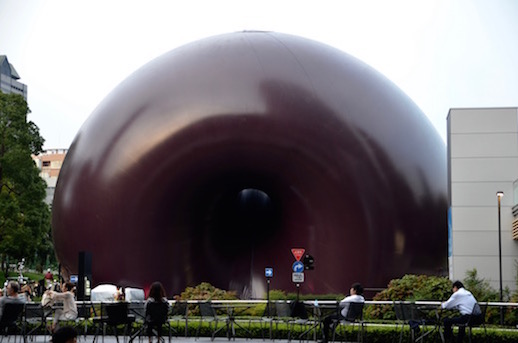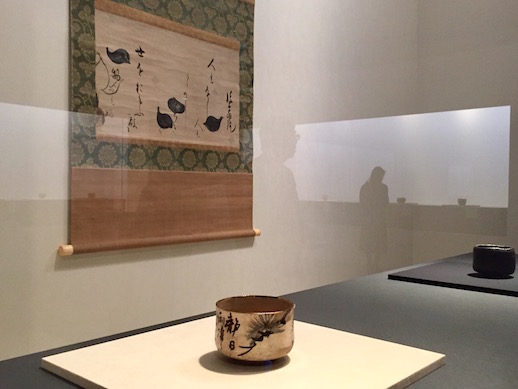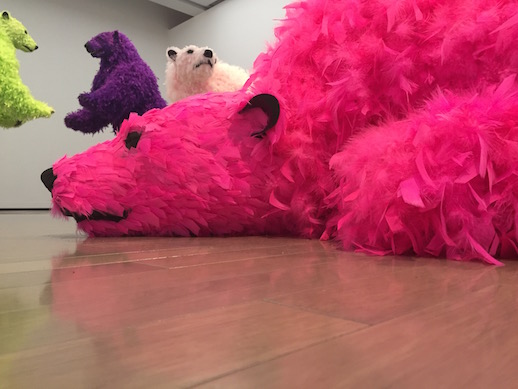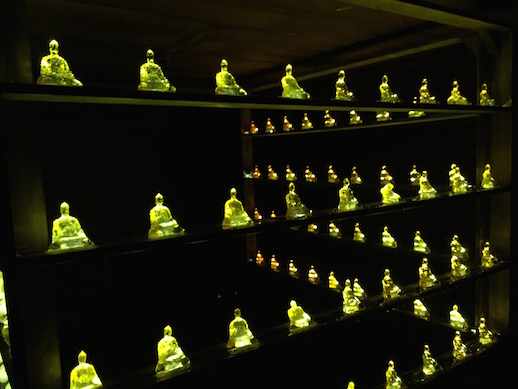Our Favorites: Exhibitions and Events in 2017
Over the past year, Tokyo Art Beat’s writers have taken in artworks, exhibitions, and events across the city. Here they reflect on their highlights from 2017.

Nick West
My favourite solo shows in Tokyo during 2017 were Ei Arakawa’s presentation of the post-war artist group Gutai as a musical in Tryst and Manabu Ikeda’s endlessly inventive ink and watercolour drawing Rebirth, but the most engaging artwork I saw was the 360-degree film shot in Fukushima Don’t Follow the Wind (2016-2017) shown at Yokohama Triennale 2017. Initiated by Chim↑Pom and co-developed with Kenji Kubota, Eva and Franco Mattes, and Jason Waite, this project gave viewers the chance to remotely experience a number of site-specific works made from within the exclusion zone.
Museums gave us plenty of contemporary art from the wider continent to appreciate, too. Most noticeably, Sunshower: Contemporary Art from Southeast Asia 1980s to Now, but also Tokyo Opera City Art Gallery’s Rhythm in Monochrome – Korean Abstract Painting. Exhibiting a selection of monochrome paintings from the movement Dansaekhwa, a collection of gestural, material, yet deceptively minimal compositions went on display.
Something else I noticed this year was a rise in the number of short-term art installations in publicly accessible spaces. Leandro Erlich installed a window suspended above a ladder at Spiral in Omotesando; Shinji Ohmaki recreated a structure that would have belonged to Kanei-ji Temple in what is now Ueno Park. But both were overshadowed by the arrival of Arata Isozaki and Anish Kapoor’s giant inflatable concert hall at Midtown during the autumn. Let’s hope that there are more of these to come in 2018.

Mac Salman
I can often be heard telling anyone that will listen that 2017 was a phenomenal year for art in Tokyo, the best art city on on the planet, in my opinion. Whether it was the very largest museums, art installations, commercial galleries, retail spaces or incredible events like Roppongi Art Night, there was never a day when there was not something new and valuable to experience.
The coordination between major art venues created wonderful thematics across the city this year. Chanoyu – The Arts of Tea Ceremony, The Essence of Japan at the Tokyo National Museum was the largest exhibition of its kind since 1980, perfectly complimented by The Cosmos In A Tea Bowl – Transmitting a Secret Art Across Generations of the Raku Family at The National Museum of Modern Art, Tokyo. Both displays allowed a retrospective of the tea ceremony and its associated ceramics, one from an overarching historic perspective and the other looking at one family’s impact on this culture.
In similar vein, the still-running Hokusai and Japonism at the National Museum of Western Art is a mere four-minute walk away from Van Gogh and Japan at the Tokyo Metropolitan Art Museum. Together, they weave an extraordinary tale of international influence, a much needed reminder in these increasingly isolationist times of the dynamic interplay of cultures and the power of art to connect us all.
At the other end of the scale, I adored Kyotaro’s Clad in the Universe exhibition at the Diesel Art Gallery in Shibuya. The spirit of the exhibition was “clothing for people living 100,000 years in the future.” The primarily pencilled works were gorgeous, and the gallery space complemented the art wonderfully. Despite its futuristic theme, Kyotaro achieve her goal that the exhibition should be “an opportunity to see what’s in front of us from a slightly different angle.” Truly art born of Tokyo, The World’s Greatest Metropolis.

Michelle Zacharias
Since 2017 was the year of Yayoi Kusama, with her solo show at The National Art Center, Tokyo, her exhibitions worldwide, and also the opening of her privately run museum, consolation prizes are being given to other noteworthy shows.
Most Attended: Yayoi Kusama’s My Eternal Soul at The National Art Center, Tokyo
Lines snaked around the inside and outside of the building despite the summer heat.
Most Improved: Yokohama Triennale 2017: Islands, Constellations & Galapagos
This year’s triennale was much better than the one in 2014. Artwork was grouped well, themes were apparent and worthy of discussion, and the art was high-quality work rather than simply from famous artists dragged out for no purpose other than to name drop. Local favorites, such as Susumu Kinoshita and Sachiko Kazama, are not often in the spotlight, so it was nice to see their recent work in a show with international aspirations. Art videos can be hit or miss, but the curators selected ones that pulled you in to watch them. The Wael Shawky piece Cabaret Crusades III: The Secrets of Karbalaa (2015) was a massive multi-media installation replicating a mosque with intricate glass marionettes enacting out a story in the video projected on the walls. Tuan Andrew Nguyen’s video The Island was another piece that compelled viewers to watch from beginning to end to see what would happen to the characters. It was also a family-friendly show with the feathery bears in I and I (must stand for art) by Paola Pivi and the humorous self-portraits of Maurizo Cattelan that provided Instagramable moments for all.
Most Unexpected: Here/There by Takako Azami at Art Front Gallery
Her large sumi-e (ink paintings) danced across the walls in what looked like abstract forms but were in fact based on what she saw outside of her windows in Chichibu, Saitama. One smaller piece of colored squares, Image 3 Gray Net 170301 (2017), depicted a sunny day viewed through a window screen.

Most Spread Out: The 6th Nakanojo Biennale
Spanning five districts of Nakanojo, Gunma, this locally run arts festival was worth the long trip and the car/bus rides and walks to get around. Artwork was installed and performances or artist talks were done in old schools, deteriorating buildings, old factories, cafes, and almost everywhere possible. The locals in this largely rural area seemed very supportive of this grassroots festival. They were proof that you do not have to an intellectual from the big city to enjoy art, including conceptual pieces.
Most Relaxing: The 6th Nakanojo Biennale
Thanks to the scenery, hot springs, ryokans, and great art.
Most Anticipated: Aside from anything to do with Yayoi Kusama, who wins this category without any doubt, this is a tie for two shows at the end of the year (unattended by this reviewer, hence the anticipation) and might not make most lists for 2017 as a result:
i) Nanami Ishihara’s Ushio Tamaau Tokoro at Artcomplex Center of Tokyo
She is using white instead of black to outline her figures in her woman-centric narrative paintings.
ii) Decoration Never Dies, Anyway at Tokyo Metropolitan Teien Art Museum
This amazing building was closed for renovations but reopened with this show that brought together seven artists from all over the world. Wim Delvoye’s Gothic lacy metal pieces were featured in the previous Yokohama Triennale, a real catch for them.

Jennifer Pastore
There was so much this year. Exhibitions and works that produced a sea of instabae shareable images. Elizabeth Peyton’s paintings brought their ineffable cool to the Hara Museum. Kusama’s pumpkins screamed about love into infinity. The Southeast Asians took over Roppongi, much to its betterment. Spaces closed, spaces opened, spaces moved. There was many a trienniale. Araki continued to contemplate mortality while Ando gave us his temple of light. There was rebirth – or so I hear – in Tohoku.
The 2017 show that impressed me most was the Taro Okamoto Award for Contemporary Art. From Bontaro Dokuyama’s aluminum nursing care room and METI tent to Naoki Sato’s sugary, missile-haunted vision of our present reality, these works by 26 emerging artists were all trenchant and imaginative. As an individual work, it was Tomoko Konoike’s giant white antler crown at the Oku-Noto Triennale that I found most poignant, especially after its self-determined untethering. Installed on a boulder just offshore in the Sea of Japan/East Sea, the massive structure and its “Go Ashore” twin (a deerman perched on a cliff) awed viewers up until the very last day of the triennale, when a typhoon swept in and took the statue with it. As if addressing the anthropocene concerns of the festival, the crown of horns harnessed the power of nature and made its break. It was outta there.


